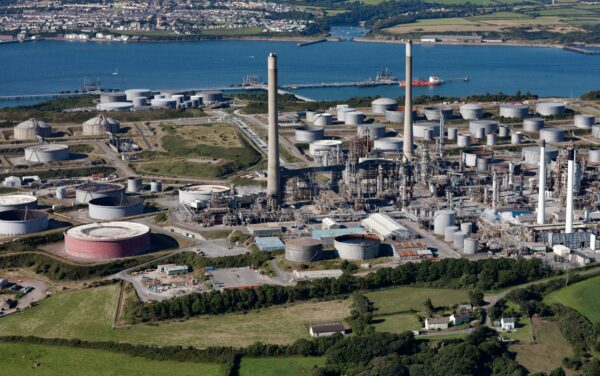The Pembroke Oil Refinery, located in Wales and operating since 1964, at the time of the incident, was owned by Chevron Limited and produced 220,000 barrels of crude oil per day. The refinery provided employment to 543 workers and about 700 contractors, one of such was B&A Contractors Limited, who were hired to empty one of the storage tanks of the ARU.
On June 2nd 2011, an atmospheric storage tank (which was part of the Amine Regeneration Unit (ARU) in the refinery) exploded. The explosion occurred in tank 17T302 at 6:19 PM. The force of the explosion ripped the tank shell away from the floor and caused the 5-tonne roof of the tank to be ejected, missing a multi-fuel pipe track by 1m. A fireball escaped through the base of the vessel killing four contractors hired to clean the vessel and majorly a fifth contractor.
The ARU supplied diethanolamine to nine scrubbing units across the refinery. Two vertical process tanks were part of the unit, 17T302 was operating as the lean amine process reservoir and 17T303 was designed for the separation of waste streams. The tanks were designed such that the vapour space above the liquid level was connected to the atmosphere through an automatic pressure-vacuum valve which allowed tank atmosphere inside to be forced out of the vessel when the liquid level rose and vacuum the air back in if the liquid level fell. Hence, to prevent the oxidation of amine the contents were topped with a 300mm diesel layer. The volatile ‘light hydrocarbons’ returning to the ARU through the rich amine stream which contaminated the diesel layer to a point where the layer was later known as the hydrocarbon layer. This contamination caused the layer to grow three fold in two years.
Following maintenance of tank 17T303, which ended mid-May 2011, the tank was topped with a new diesel layer. The contents of tank 17T302 were transferred into 17T303, leaving the hydrocarbon layer inside the tank. A manual dip test preformed by a plant operator showed a 550mm depth of the hydrocarbon layer. Draining of the tank continued by emptying the hydrocarbon layer through the main drain valve, however, the operator was not aware of the additional internal sump and siphon drain designed to empty the tank fully. Additionally, the level gauge on the tank wall did not report on the level of the liquid below 0.59m. Consequently about 460mm of the hydrocarbon layer remained in the tank. This was discovered during tank isolation work and a decision was made to hire B&A Contactors to drain the tank with the use of a vacuum tanker.
On June 2nd 2011, the contractors began the cleaning operation. The vessel manway was opened without prior ventilation or a gas test, the results of the gas test taken days prior which reported 67% of the LEL were not documented or reported to the B&A crew. The liquid was vacuumed using a non-conductive PVC hose with a scaffold pole attached to aid with movement. During this process, there was an ignition source most likely caused by the scaffolding pole, which will be discussed with more detail in further posts, coupled with an adequate amount of oxygen and fuel concentration of high LEL% caused the explosion killing four contractors and severely injuring a fifth. This incident was not inevitable and could have been easily prevented. These failures will be discussed in more detail in the subsequent blogs.
Occupli Consultancy specialists provide practical solutions and advice to all our clients in all areas of ATEX and process related safety concerns. Our team work to legislative requirements and benchmark against industry best practice to produces assessments for our clients. Occupli Consultants have carried out ammonia risk assessments in a range of different industries including medical devices, pharmaceutical and food industries.
If you require consultation on process or ATEX safety issue, reach out to our team of consultants here.

